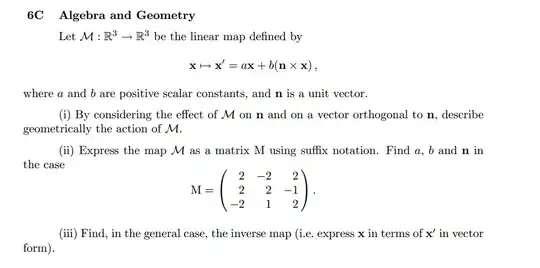EDIT: I found an easier way to do (iii).

Hi, I need help on part (i)[I know what the map is doing but can't describe it] and (iii). I found $ M_{ik}= (a\ \delta _{ik} + b\ \varepsilon_{ijk}\ n_j ) $ (summation Convention).
$M = \begin{pmatrix} a & -bn_{3} & bn_{2} \\bn_{3} & a & -bn_{1} \\-bn_{2} & bn_{1} & a \end{pmatrix} $
For part (iii) one way would be to invert the matrix M. I was wondering if there is some other quicker way, maybe using suffix notation.
Thanks